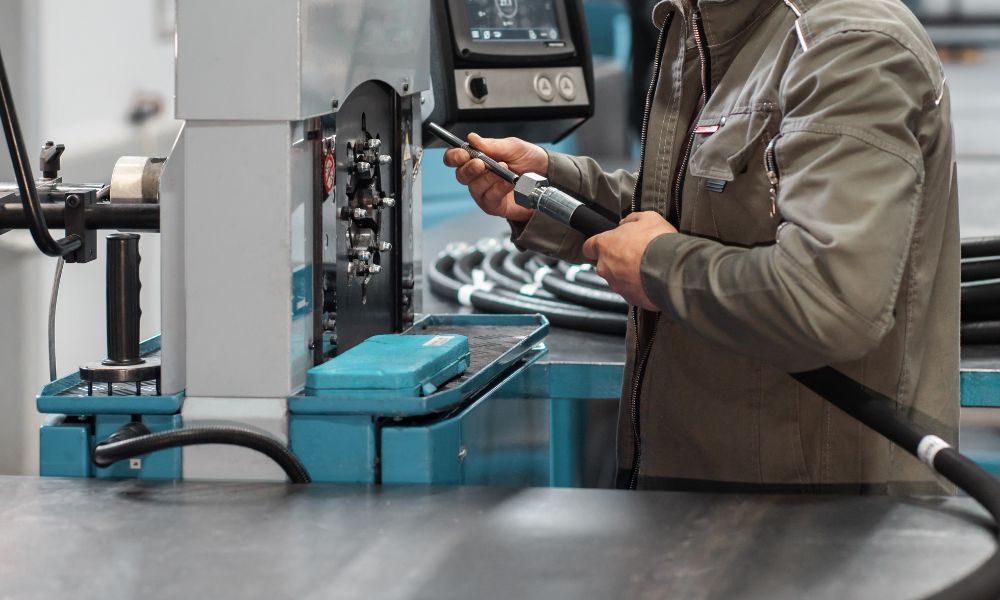Is It a Good Idea To Patch a Hydraulic Hose?
Hydraulic hoses frequently spring minor leaks, but is it better to repair the hose or replace it entirely? We explain in our guide on hydraulic hose repair.
by Scot Ranney • June 20, 2023
If you find a leak or crack in a hydraulic hose, is it a good idea to patch it up yourself? We answer that question in our explainer on hydraulic hose repairs and offer tips for spotting compromised hydraulic hoses.
Replace, Don’t Repair
If you find a minor leak or crack in a hydraulic hose, you may be tempted to think it’s a manageable issue that you can fix easily. But it’s never a good idea to patch a hydraulic hose—you should always replace it for the good of the system’s integrity and workplace safety.
Hydraulic hoses are only meant to be replaced, not repaired, and any reputable industrial hydraulic hose distributor will tell you the same. Replacing a damaged hydraulic hose is the only way to ensure that it’s safe to use, as a damaged hydraulic hose is not only an inconvenience but also dangerous. If you need to replace any hydraulic hoses, The Hose Shop can help.
Signs To Replace a Hydraulic Hose
Since damaged hydraulic hoses are dangerous and require immediate replacement, owners and inspectors must look for signs of compromised hoses. There are many ways to tell that a hydraulic hose needs replacement, but the most common signs are a damp surrounding area or an inflexible hose.
Dampness and Leaks
A leak is the clearest sign that a hydraulic hose is ready for replacement. However, spotting a minor leak or crack in a massive hydraulic hose system can be like looking for a needle in a haystack.
Instead of combing through every hose looking for a sliver of a leak or crack, inspect the surrounding areas for any signs of dampness or pools of fluid nearby. A hydrostatic pressure test is also a good method for spotting minor cracks or leaks, which The Hose Shop can do for your hydraulic hose system.
Loss of Flexibility
Another common sign that a hydraulic hose is near the end of its utility is it loses its flexibility. Hydraulic hoses must be elastic and stretch to work properly, but as they age or become compromised, they can wear down, crack, and stiffen.
Most of the damage to hydraulic hoses is external, coming from the hose rubbing against an abrasive object during operation. Check to ensure every hose has enough room to move and vibrate while transporting fluid without earning abrasions from external objects.
Conclusion
If you need to replace a faulty hydraulic hose, The Hose Shop has plenty of high-quality pre-made hydraulic hoses in supply. You’re likely to find whatever type of hose you need for your system at The Hose Shop. Browse our inventory online or contact our expert staff with questions today!


